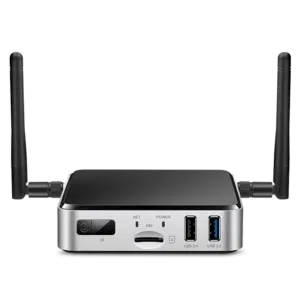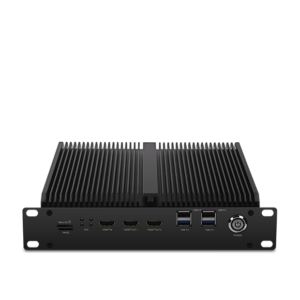AI on Edge Units vs. Cloud AI: Benefits and Cons
AI on Edge Units vs. Cloud AI: Benefits and Cons
Blog Article
A Comprehensive Information to Deploying AI on Edge Devices
Real-World Purposes of AI on Edge Units
Synthetic intelligence (AI) is no longer confined to the kingdom of large, centralized data centers. As a result of improvements in engineering, edge products today perform a vital position in deploying AI right wherever information is generated. But what does AI on edge devices suggest, and why is it making this type of excitement? Here, we'll investigate how edge ai device works in the real world through edge units and discover its wide range of useful applications.

What's AI on Edge Products?
AI on side products describes deploying synthetic intelligence algorithms directly on devices like smartphones, cameras, drones, or IoT sensors. These devices do not need use of centralized machines for processing information; as an alternative, they conduct analysis and choices locally, creating the method quicker, more efficient, and often more secure.
The "edge" here only refers to computing done near to or at the origin of information generation, instead of relying on the cloud. That change is pushed by the requirements for real-time knowledge control and the requirement to reduce latency, increase solitude, and lower bandwidth usage.
Key Real-World Applications of Side AI
1. Intelligent Security
AI-powered cameras built with skin acceptance, activity recognition, and anomaly detection are transforming security systems. Side products in this domain can analyze video streams in real-time to spot suspicious activities, eliminate false alerts, and improve public safety. For example, AI calculations can find unusual movements and attentive authorities instantly without the need to deliver movie information to a main host for analysis.
2. Healthcare Checking
Wearable devices and lightweight medical gear are leveraging ai m.2 module for handling health data more efficiently. Edge-based AI in devices like wellness trackers and smartwatches screens users' vitals, such as heartrate, oxygen levels, or body pressure, in real-time. These systems analyze data locally and provide fast feedback, paving just how for faster intervention throughout emergencies.
Beyond wearables, sophisticated medical imaging products designed with on-device AI can find signs of diseases like cancer, enabling earlier diagnoses even in distant areas without web connectivity.
3. Autonomous Vehicles
Self-driving cars are among the absolute most well-known samples of edge AI in action. With receptors, cameras, and LiDAR techniques providing as data resources, AI computations take place onboard these vehicles to make split-second decisions. From finding pedestrians and obstacles to moving town roads, edge AI assures that the vehicle works easily and efficiently. The real-time handling capability of edge devices reduces the reliance on high-latency cloud programs, ensuring safety in life-critical scenarios.
4. Retail Analytics
Edge units in retail situations are helping companies analyze client behavior. Intelligent shelves and AI-equipped cameras may find client preferences, monitor catalog, and also modify in-store experiences in real time. The info developed from these units helps suppliers produce educated decisions, increase customer care, and enhance catalog management.

5. Commercial IoT
Factories and commercial plants are adopting edge AI to revolutionize their tracking and automation processes. AI-powered receptors on equipment find possible problems a long time before they result in costly failures. Predictive maintenance pushed by side AI decreases downtime, improves production, and assures protection on the production floor.
6. Personalized Experiences in Customer Units
Your smartphone is a prime example of how side AI personalizes consumer experiences. Features such as for example voice assistants, flexible camera settings, and on-device language translation use real-time AI to react to individual needs without sending sensitive and painful data to additional servers. That fosters equally ease and privacy for the end user.
The Growing Affect of Side AI
The usage of AI on edge products continues to surge, driven by industries' increasing demand for low-latency, real-time research, and larger information privacy. Its applications are reshaping industries which range from healthcare and automotive to public safety and retail. By adding AI's power closer to wherever information is generated, edge devices aren't just increasing performance but also demonstrating the countless possible of invention in the present connected world. Report this page